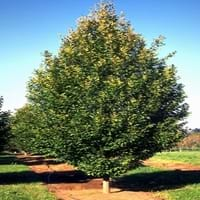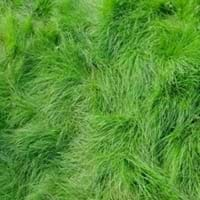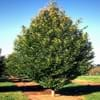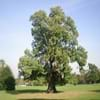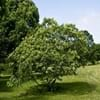Life Span
Perennial
Perennial
Origin
Europe, Eastern Europe, Southern Europe, Western Europe, Turkey
World/Pandemic, North America, Europe
Types
Not Available
Lustrous Creeping Red Fescue, Rubra trichophylla, Rubra rubra
Habitat
Hedge, Woodland Garden Canopy
Wide range of ecological site
USDA Hardiness Zone
4-8
2-7
Sunset Zone
2a, 2b, 3a, 3b, 4, 5, 6, 7, 8, 9, 14, 15, 16, 17
A2, A3, 1a, 1b, 2a, 2b, 3a, 3b, 4, 5, 6, 7, 8, 9, 10, 14, 15, 16, 17, 18, 19, 20, 21, 22, 23, 24
Habit
Oval or Rounded
Mat-forming
Minimum Width
Not Available
Flower Color
Yellow, Green
Not Available
Flower Color Modifier
Bicolor
Bicolor
Fruit Color
Yellow, Green, Brown
Non Fruiting Plant
Leaf Color in Spring
Green, Light Green
Dark Green
Leaf Color in Summer
Green, Dark Green
Light Green
Leaf Color in Fall
Yellow, Yellow green, Orange Red
Dark Green
Leaf Color in Winter
Not Available
Tan
Leaf Shape
Ovate and toothed
Grass like
Plant Season
Summer, Fall, Winter
Spring, Summer, Fall, Winter
Sunlight
Full Sun, Partial Sun, Partial shade
Full Sun, Partial Sun, Partial shade
Type of Soil
Clay, Loam
Clay, Loam, Sand
The pH of Soil
Acidic, Neutral
Acidic, Neutral
Soil Drainage
Average
Average
Bloom Time
Spring
Early Summer, Summer, Late Summer
Tolerances
Pollution, Drought
Not Available
Where to Plant?
Ground
Ground
How to Plant?
Seedlings
From Rhizomes
Plant Maintenance
Medium
Medium
Watering Requirements
Requires regular watering
Needs 2-3 times watering per week
In Summer
Lots of watering
Lots of watering
In Spring
Moderate
Moderate
In Winter
Average Water
Average Water
Soil pH
Acidic, Neutral
Acidic, Neutral
Soil Type
Clay, Loam
Clay, Loam, Sand
Soil Drainage Capacity
Average
Average
Sun Exposure
Full Sun, Partial Sun, Partial shade
Full Sun, Partial Sun, Partial shade
Pruning
Remove dead or diseased plant parts
Prune grass to maintain level
Fertilizers
All-Purpose Liquid Fertilizer
fertilize in fall
Pests and Diseases
Aphids, Coral Spot, Powdery mildew
Billbugs, Dollar spot, Pythium blight, Red blotch, Red thread, White grubs
Plant Tolerance
Drought
Not Available
Flowers
Insignificant
Insignificant
Flower Petal Number
Not Available
Single
Foliage Texture
Medium
Fine
Foliage Sheen
Glossy
Matte
Attracts
Caterpillar, Not Available
Bugs
Aesthetic Uses
Bonsai
Ground Cover
Beauty Benefits
Not Available
Not Available
Environmental Uses
Air purification
Erosion control, Wildlife
Medicinal Uses
Bach, Haemostatic, Ophthalmic
No Medicinal Use
Part of Plant Used
Bark, Leaves, Wood
Whole plant
Other Uses
Used as fuel, Used to make yellow dye
Used as Ornamental plant
Used As Indoor Plant
Yes
No
Used As Outdoor Plant
Yes
Yes
Garden Design
Feature Plant, Hedges, Screening / Wind Break, Shade Trees, Street Trees
Edging, Groundcover, Lawns and Turf, Mixed Border, Rock Garden / Wall
Botanical Name
CARPINUS betulus
FESTUCA rubra
Common Name
European Hornbeam
Red Fescue
In Hindi
European Hornbeam
Red Fescue
In German
Hainbuche
Rotschwingel
In French
Hornbeam européenne
fétuque rouge
In Spanish
Europeo carpe
festuca roja
In Greek
Ευρωπαϊκή Γαύρος
κόκκινο Φεστούκα
In Portuguese
Carpino Europeia
Red festuca
In Polish
Europejski Grab
Kostrzewa czerwona
In Latin
Carpinus betulus
Red Fescue
Phylum
Magnoliophyta
Magnoliophyta
Class
Magnoliopsida
Liliopsida
Family
Betulaceae
Poaceae
Clade
Angiosperms, Eudicots, Rosids
Angiosperms, Commelinids, Monocots
Tribe
Carpineae
Not Available
Subfamily
Coryloideae
Not Available
Number of Species
Not Available
Not Available
Importance of European Hornbeam and Red Fescue
Want to have the most appropriate plant for your garden? You might want to know the importance of European Hornbeam and Red Fescue. Basically, these two plants vary in many aspects. Compare European Hornbeam and Red Fescue as they differ in many characteristics such as their life, care, benefits, facts, etc. Every gardener must at least have the slightest clue about the plants he wants to plant in his garden. Compare their benefits, which differ in many ways like facts and uses. The medicinal use of European Hornbeam is Bach, Haemostatic and Ophthalmic whereas of Red Fescue is No Medicinal Use. European Hornbeam has beauty benefits as follows: Not Available while Red Fescue has beauty benefits as follows: Not Available.
Compare Facts of European Hornbeam vs Red Fescue
How to choose the best garden plant for your garden depending upon its facts? Here garden plant comparison will help you to solve this query. Compare the facts of European Hornbeam vs Red Fescue and know which one to choose. As garden plants have benefits and other uses, allergy is also a major drawback of plants for some people. Allergic reactions of European Hornbeam are Pollen whereas of Red Fescue have Asthma respectively. Having a fruit bearing plant in your garden can be a plus point of your garden. European Hornbeam has no showy fruits and Red Fescue has no showy fruits. Also European Hornbeam is not flowering and Red Fescue is not flowering . You can compare European Hornbeam and Red Fescue facts and facts of other plants too.
